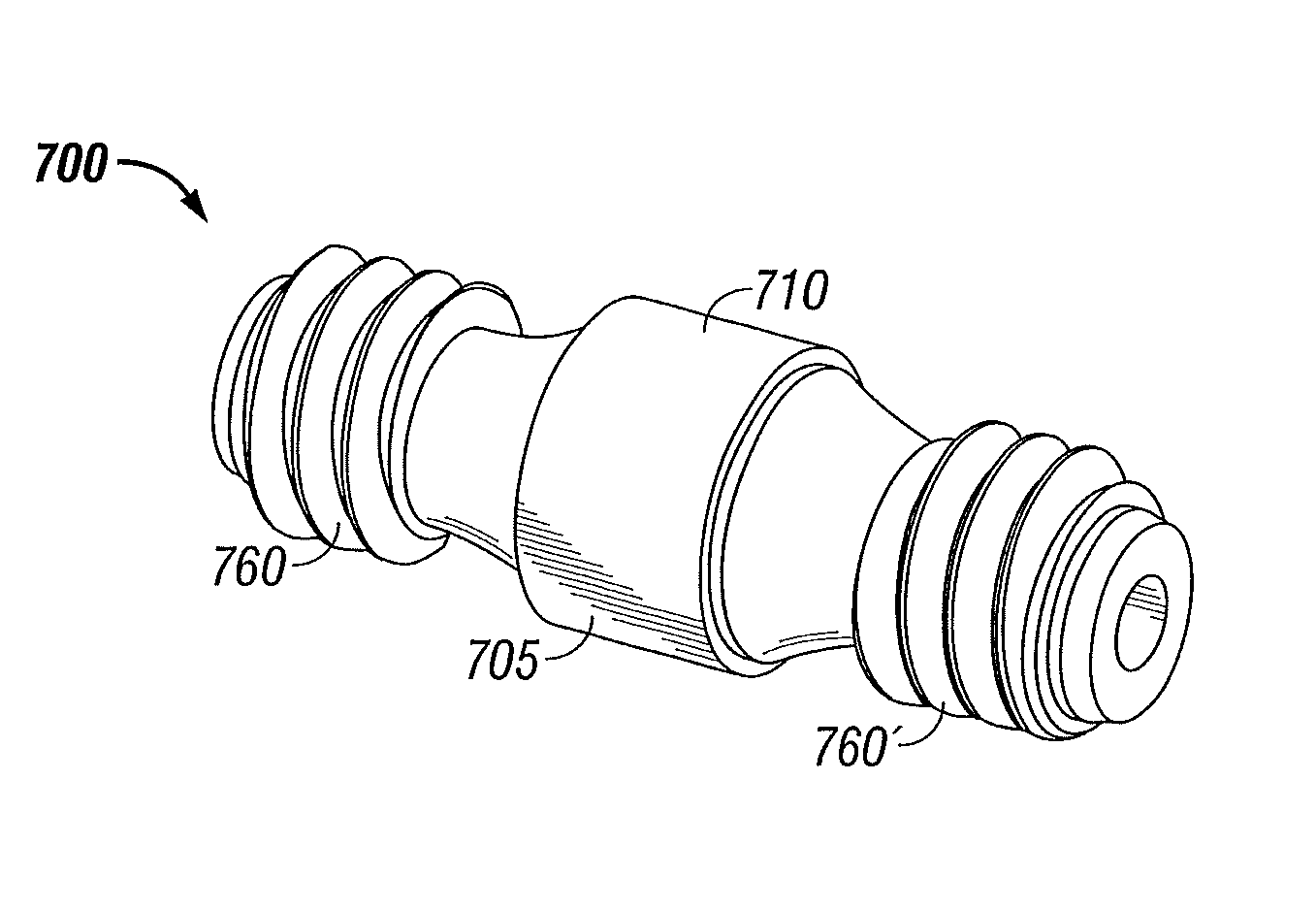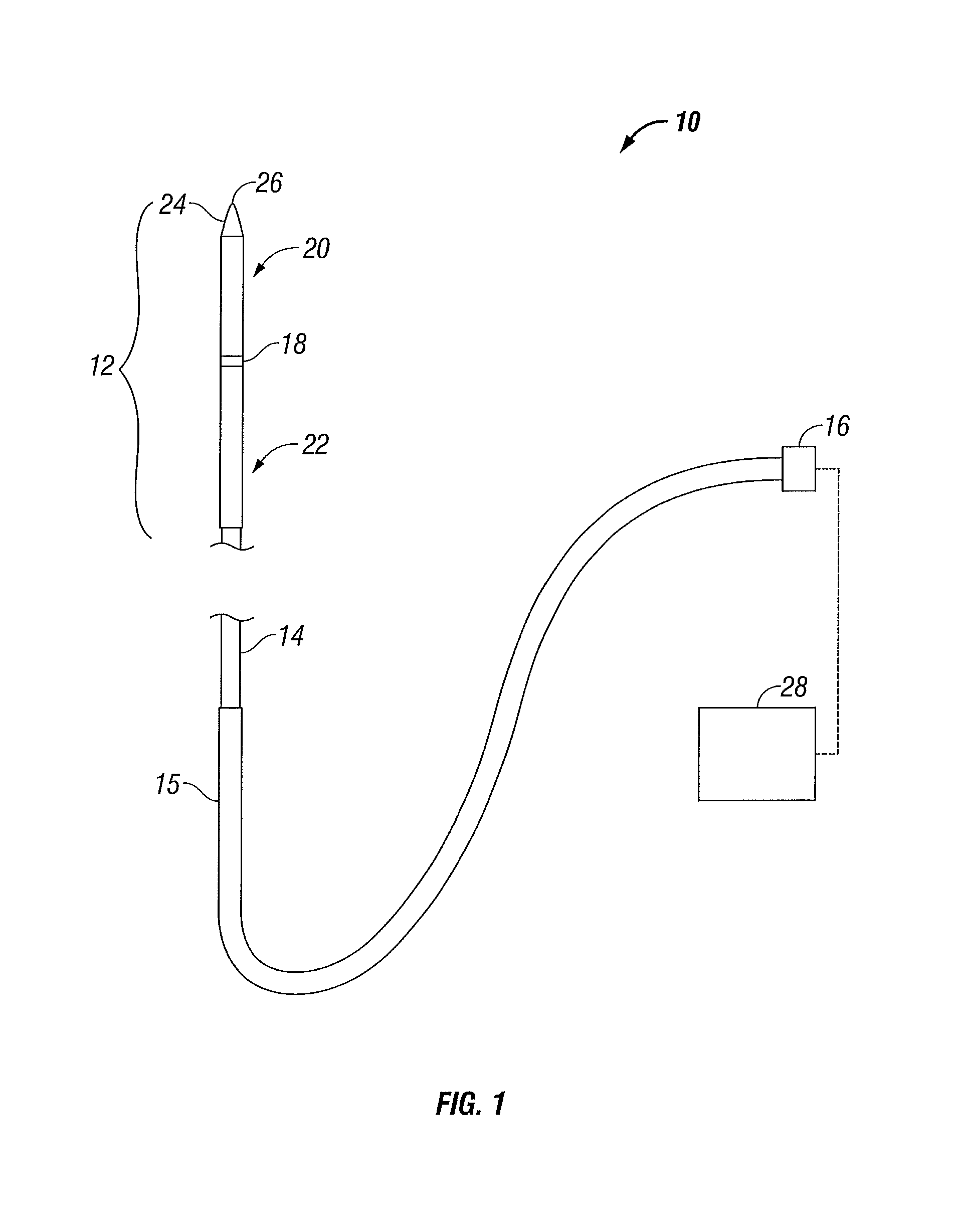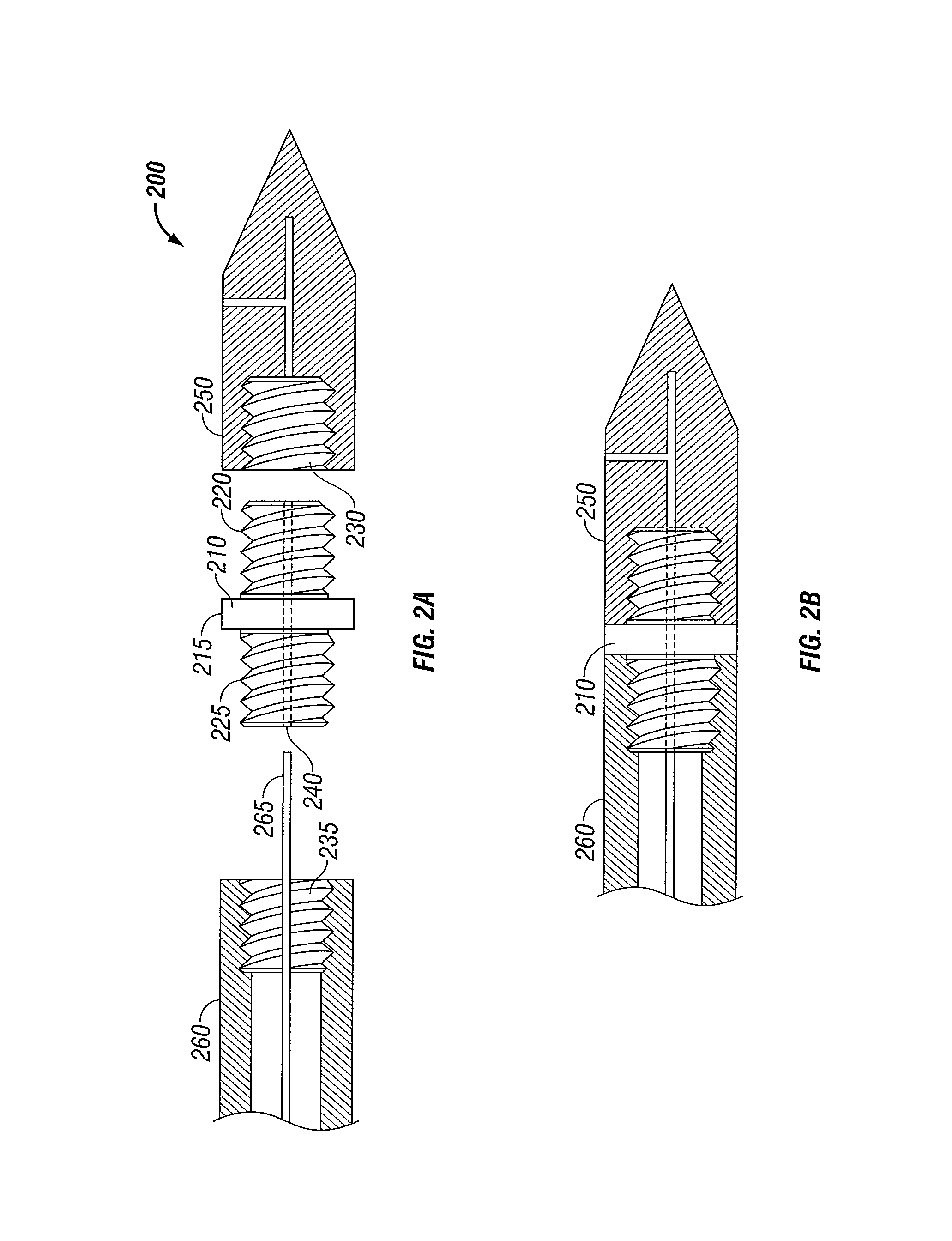High-strength microwave antenna coupling
a microwave antenna and high-strength technology, applied in the direction of screws, threaded fasteners, bolts, etc., can solve the problems of unwanted heating of healthy tissue, non-invasive use of microwave energy requires a great deal of control, and the thermal damage of most types of normal cells is routinely observed, so as to achieve the effect of adding strength to the thin region
- Summary
- Abstract
- Description
- Claims
- Application Information
AI Technical Summary
Benefits of technology
Problems solved by technology
Method used
Image
Examples
Embodiment Construction
[0047]Particular embodiments of the present disclosure will be described herein with reference to the accompanying drawings. As shown in the drawings and as described throughout the following description, and as is traditional when referring to relative positioning on an object, the term “proximal” refers to the end of the apparatus that is closer to the user and the term “distal” refers to the end of the apparatus that is further from the user. In the following description, well-known functions or constructions are not described in detail to avoid obscuring the present disclosure in unnecessary detail.
[0048]FIG. 1 shows an exemplary embodiment of a microwave antenna assembly 10 in accordance with the present disclosure. The antenna assembly 10 includes a radiating portion 12 that is connected by feedline 14 (or shaft) via cable 15 to connector 16, which may further connect the assembly 10 to a power generating source 28, e.g., a generator. Assembly 10, as shown, is a dipole microwa...
PUM
 Login to View More
Login to View More Abstract
Description
Claims
Application Information
 Login to View More
Login to View More - R&D
- Intellectual Property
- Life Sciences
- Materials
- Tech Scout
- Unparalleled Data Quality
- Higher Quality Content
- 60% Fewer Hallucinations
Browse by: Latest US Patents, China's latest patents, Technical Efficacy Thesaurus, Application Domain, Technology Topic, Popular Technical Reports.
© 2025 PatSnap. All rights reserved.Legal|Privacy policy|Modern Slavery Act Transparency Statement|Sitemap|About US| Contact US: help@patsnap.com



